Ah, butterflies…the “winged blossoms” of the garden! Let’s talk about a couple of our favorite plants for butterflies.
If you want more butterflies in your garden (and don’t we all?), you have to feed their caterpillars. True, adult butterflies will visit just about any flower with nectar. So yes, if you have a butterfly bush (Buddleia spp.), or other non-native flowers, you may attract adult butterflies. But you won’t be making more butterflies unless you provide what their caterpillars need.
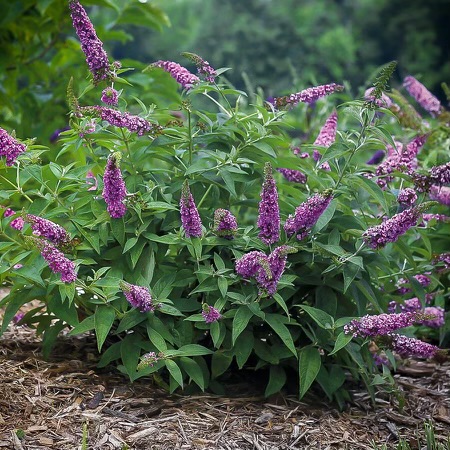
Even very hungry caterpillars won’t eat just anything. They are “specialist” insects, and can only eat certain “host” plants. If butterflies can’t find that host plant, and happen to lay their eggs on whatever is around, the caterpillars will die. So, pollinator and butterfly gardens should include host plants.
In recent posts, we’ve talked about planting Milkweed for Monarchs, and Switch Grass for Skippers. Both are essential hosts for their particular butterfly friends. Here are two more important host plants:

Zizia (Zizia aurea), sometimes called “Golden Alexander,” is the native host plant for Black Swallowtail butterflies. Maybe you’ve seen Swallowtail caterpillars on parsley, dill, or carrot plants? Although those plants are not native to the US, they are in the same plant family (Apiaceae) as Zizia, and genetically so closely related that Black Swallowtail caterpillars accept them as hosts, and do indeed eat them.
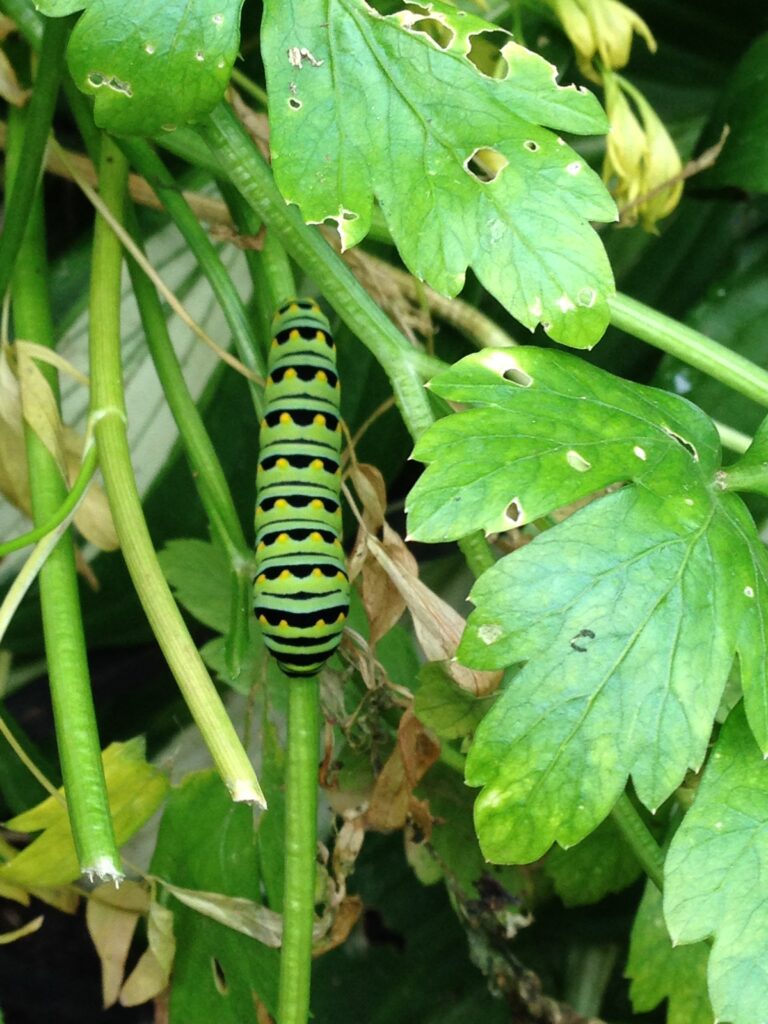
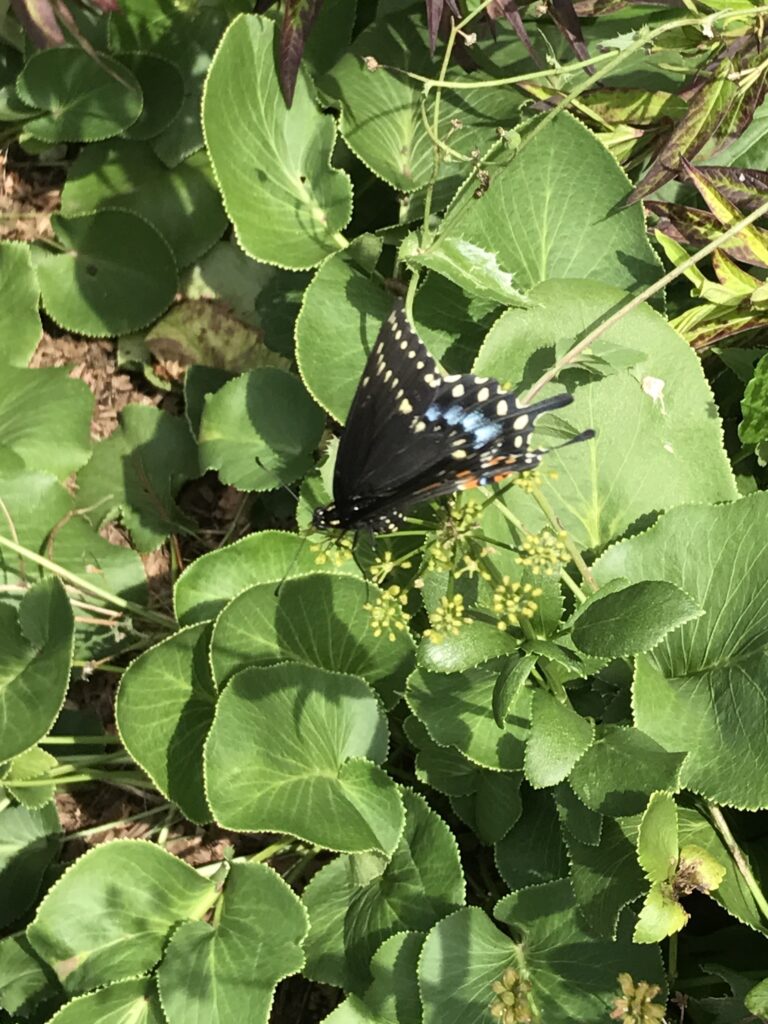
Zizia is a lovely garden plant. It likes full sun, as do most pollinator-friendly plants, and is easy to grow. It blooms in early summer and often reblooms later in the season. Its flowers are loaded with nectar, so it attracts plenty of pollinators in addition to Black Swallowtails. It prefers moist conditions, but will do fine in average garden soil. Zizia works well near the front of the border where it typically stays under 3 feet tall.

Another excellent host plant is Antennaria neglecta, which has the curious common name “Field Pussytoes.” Maybe the fuzzy white flowers do vaguely resemble a cat’s paw? Antennaria should be used much more than it is. It’s a great ground cover along sunny walkways or at the edge of pavement. It holds up to summer heat, and actually prefers shallow gritty soil, so it’s happy where paving has left gravel in adjacent areas. It does not do well in rich or moist soil.

Antennaria is the host plant for the beautiful American Painted Lady butterfly. We found this exhausted Painted Lady laying her eggs on Antennaria, and it looked like she was very grateful to finally have found her host plant. It shouldn’t be so hard to find!
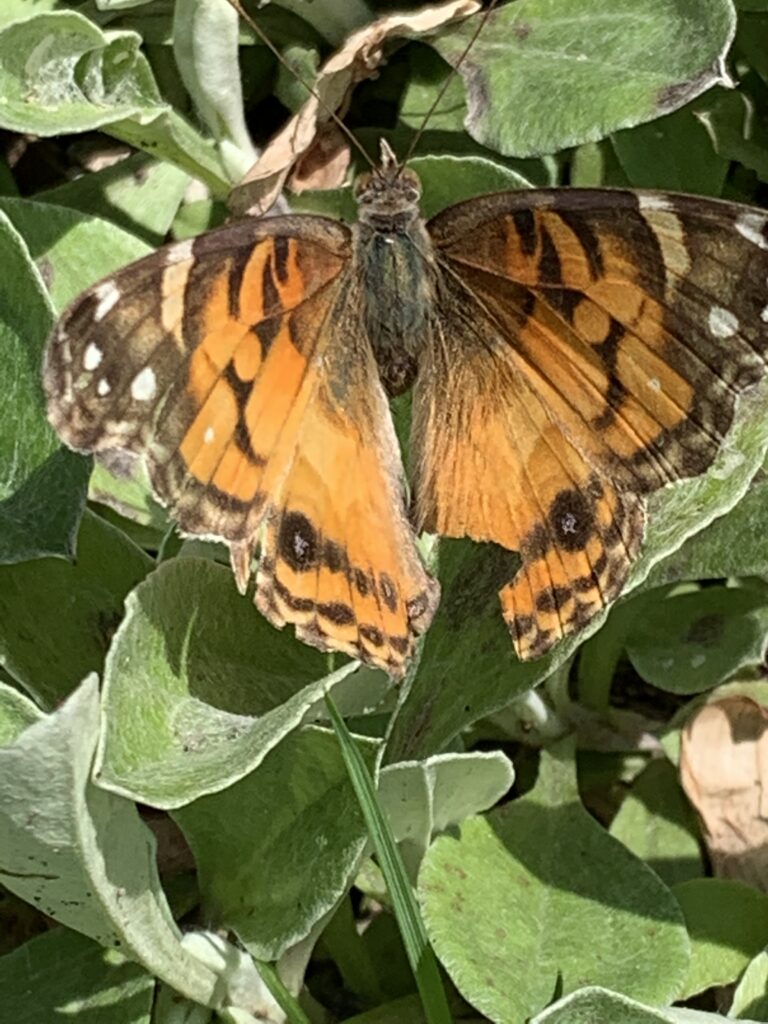
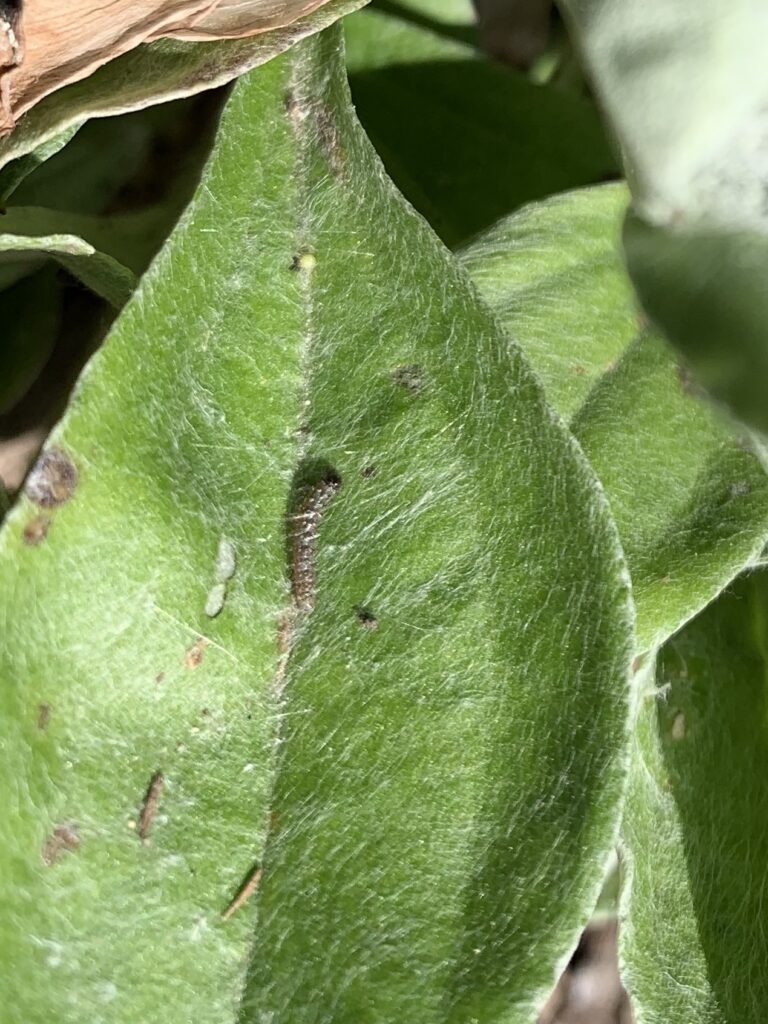
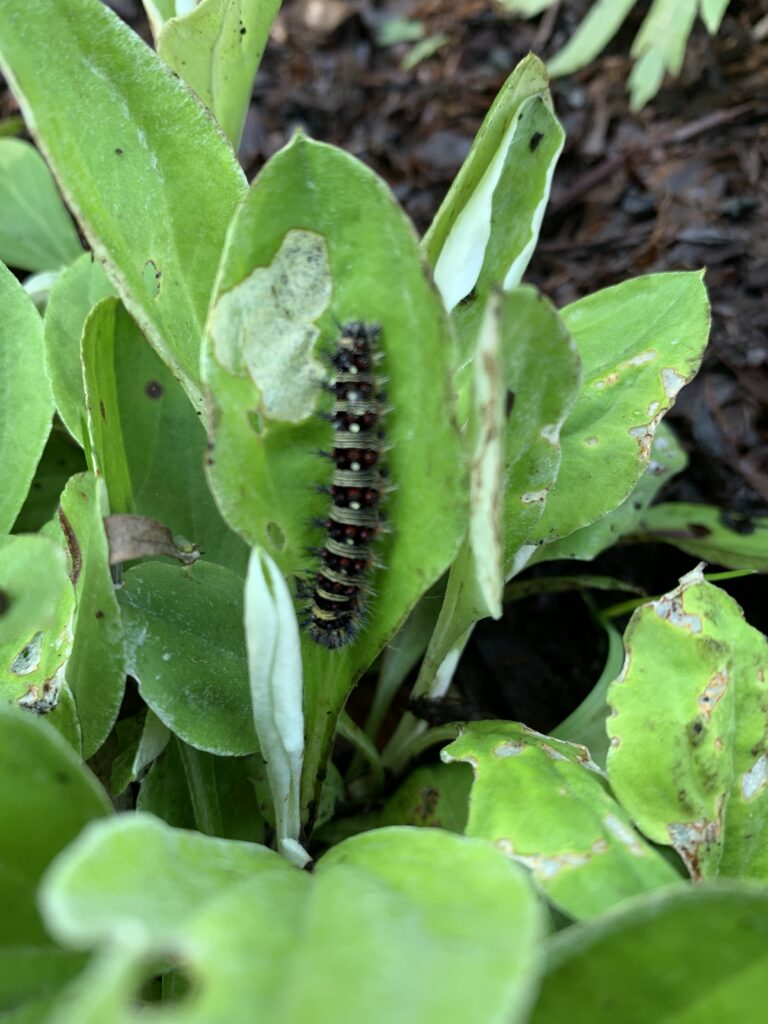
Antennaria is semi-evergreen and survives even where snow plows bury it. In the spring, new leaves come up through the old foliage, and then it starts blooming in April.

Antennaria, or Field Pussytoes, is an underused plant in our landscapes. It is a great garden plant that should be found everywhere — because we really do need to feed those hungry caterpillars!

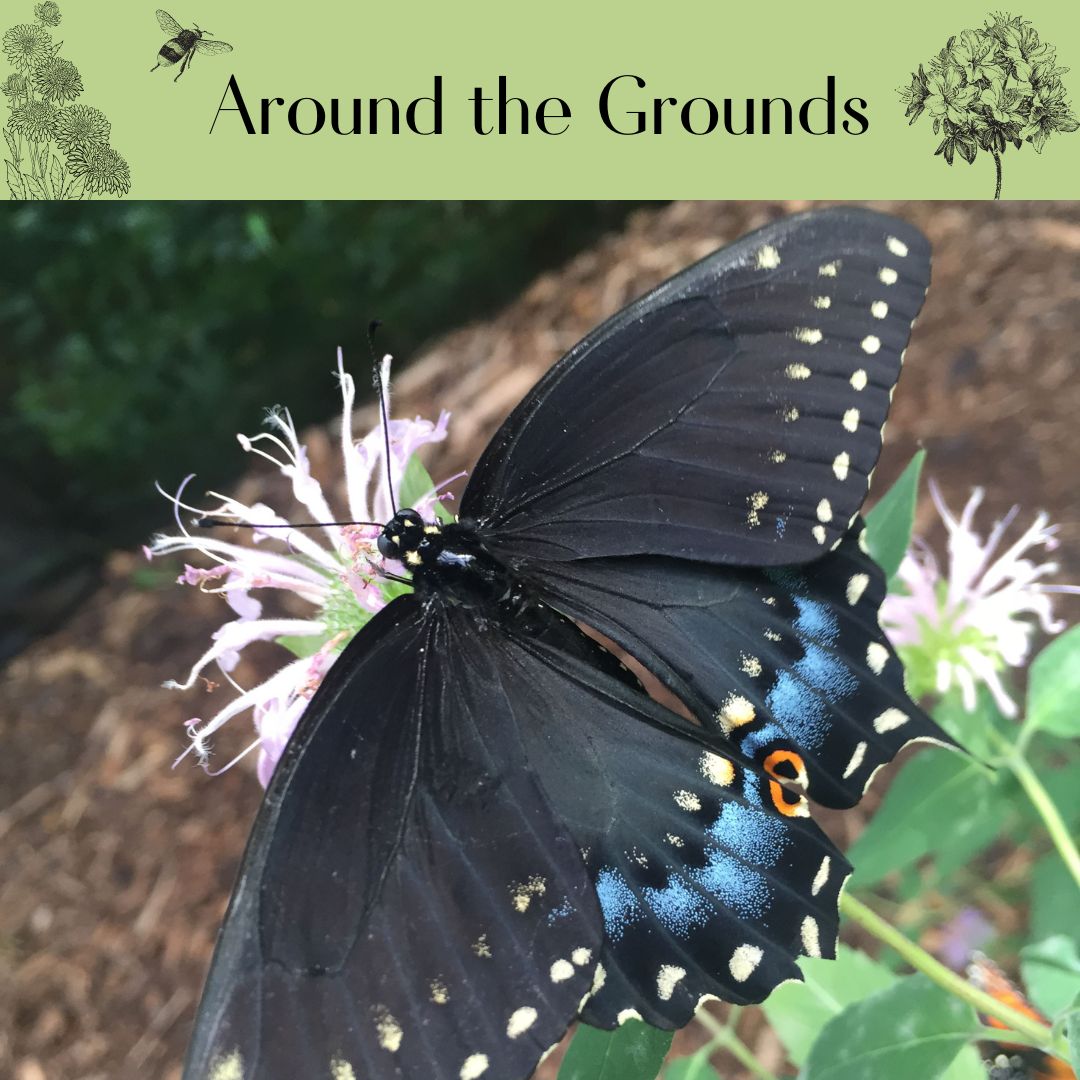
I super loved the photos this week!
Starting to look like spring?
Cathy, though I know you’re addressing those people near the Nature Center, but could you add the zone for your garden picks? You’re column is read far and wide!
Excellent comment, thank you! I will be more mindful of that starting now:
Zizia is hardy in Zones 4-9. Antennaria in Zones 3-9. It may be more important to know the native range of each plant because then such factors as soil and moisture and the wildlife supported also come in to play. Zizia is native to moist meadows from south central to eastern Canada and south as far as Texas and Florida, taking in the central plains of the US. Antennaria is native across all of southern Canada and as far south as Arizona and Texas, but not in hot humid parts of the country. Dry rocky areas with poor soil are preferred. It will take cold winters without a problem, but it won’t work in rich irrigated humus soils.